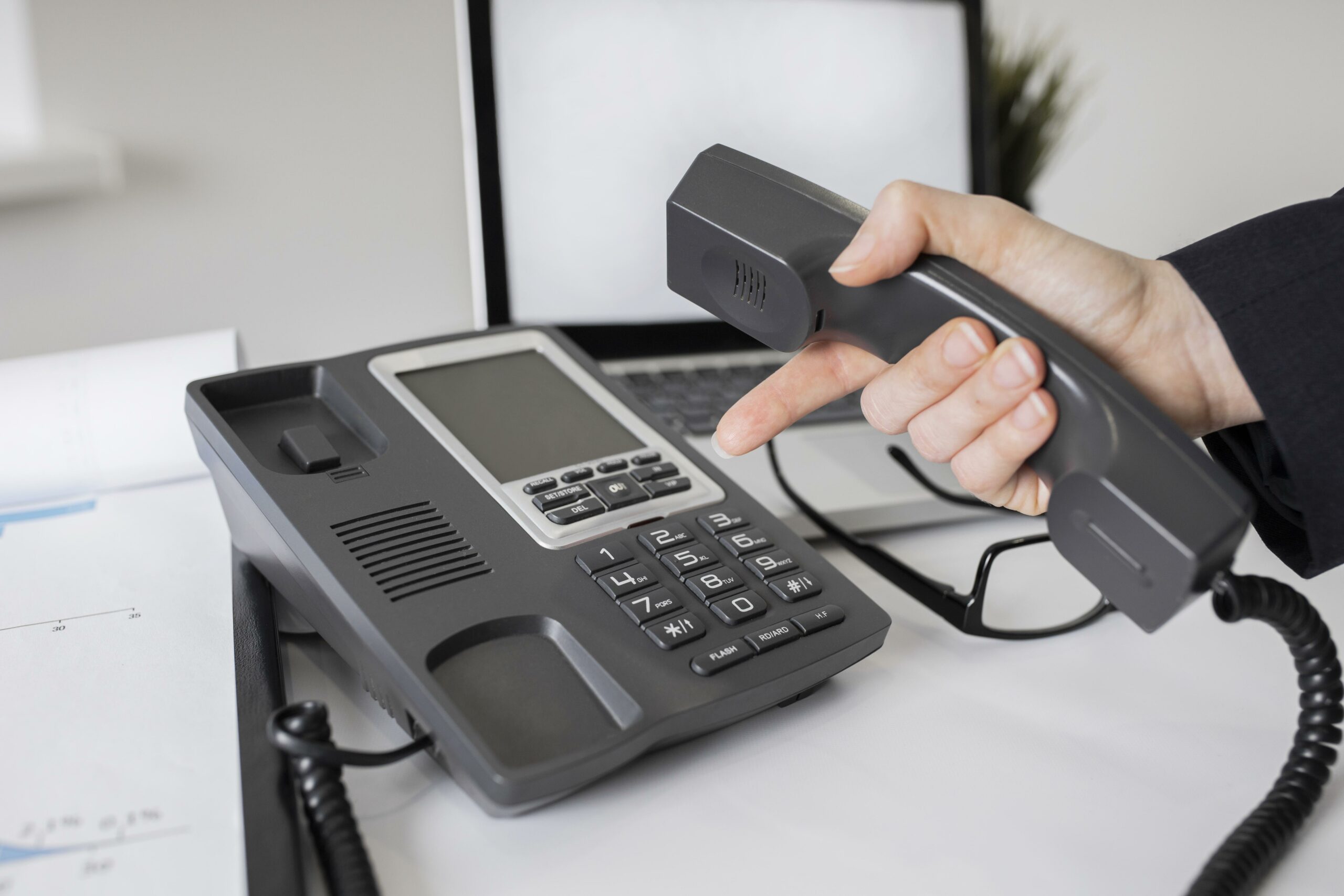VoIP services allow phone calls over the Internet instead of regular phone lines. These services, also known as Voice over Internet Protocol (VoIP), use your broadband connection to make and receive calls. Some key things VoIP services offer are:
Calling anywhere worldwide for low rates using the Internet rather than phone networks. Advanced call features like voicemail, call waiting, and three-way calling usually cost extra on regular phone plans. Mobility through smartphone apps and softphones lets you use the same number from any device with an internet connection. Unified communications tools that combine messaging, video calls, and collaboration in one system.
In this guide, we will look at how VoIP works using protocols like SIP, the different types of services for homes and businesses, options for phones and equipment, potential cost savings compared to traditional phone bills, and answers to frequently asked questions about reliability, internet speeds, and more.
What Exactly is This VoIP Thing?
Now that we’ve introduced VoIP services, let’s dive deeper into understanding this technology. At its core, VoIP allows phone calls over the Internet rather than traditional phone lines. But how does it work? Let’s break it down step-by-step:
● VoIP Conversion: Your voice is converted into digital data using audio codecs like G.711, G.729, or SILK. This process is called digitization.
● Internet Protocol Transport: The digital data packets are sent over the Internet using IP protocols like TCP and UDP. Real-time voice packets use RTP, while encrypted calls may use SRTP.
● Addressing with SIP: The Session Initiation Protocol, or SIP, is used for call signaling. It handles caller/callee identification, feature negotiation, and call routing tasks.
● Gateway to PSTN: Calling a regular phone number converts the data to audio at a VoIP gateway and enters the Public Switched Telephone Network (PSTN).
● Quality of Service: For smooth calls, technologies like Quality of Service (quality of service) prioritize voice packets to reduce latency and jitter.
● Endpoints and Equipment: You can use softphones on computers and smartphones or headphones that plug directly into your network, like an IP desk phone. Does this help explain how the magic happens behind the scenes? The network does a lot of work to convert your voice into data and back again seamlessly.
Under the Hood: Codecs and Protocols
Let’s pull back the curtain a bit more on some key technical aspects:
Codecs compress audio for efficient transport. Popular ones include G.711 for clear calls and G.729 for bandwidth savings. SIP acts as a “phone number” to identify endpoints and direct calls through the IP network. RTP carries the actual voice stream in real-time using UDP. SRTP provides encryption for secure calls.
Quality of service mechanisms like DiffServ prioritize voice to maintain call quality despite internet traffic fluctuations. Multimedia Internet Keying (MIKEY) negotiates encryption keys between endpoints for secure RTP.
Types of VoIP Services

Now that we’ve covered the technical side, let’s look at the different types of VoIP services available. Like with any technology, there are multiple ways to access VoIP calling, depending on your needs and preferences.
Computer-Based vs Phone-Based
One choice is whether to use your computer or a dedicated VoIP phone. Computer-based calling involves softphones, while phone-based calls use hardphones or desk phones. Using an audio headset, softphones let you turn any computer or mobile device into an IP phone. Popular softphone apps include Skype, WhatsApp, and Google Voice. Headphones are physical phones that connect directly to your network and function like a traditional desk phone, with features like a speaker, display, and buttons.
Residential vs Business
Services also vary based on your intended use – home or office. Residential plans focus on primary calling, while business class adds advanced features for teams. Home VoIP plans provide calling to regular phones for a low monthly fee. Vonage, Ooma, and Nextiva offer great options. Hosted PBX solutions like RingCentral and 8×8 for small businesses, combining VoIP with fax, video meetings, and collaboration tools.
Subscription vs DIY
Finally, services are complete subscriptions handled by the provider or “bring your own broadband” models where you self-manage the account. Subscription VoIP means you pay one bill, and the provider takes care of the backend. Good for simplicity. DIY VoIP involves purchasing equipment upfront and then signing up for service separately. More setup work but potentially lower costs long-term.
Dialing Up the Fun: How VoIP Calls Work
Now that we’ve covered the types of VoIP services let’s get into the nitty-gritty of placing and answering calls. The process may seem similar to a traditional phone, but it works differently under the hood.
● Placing Calls with SIP: Your VoIP device connects to the provider’s SIP servers, which act as an IP-based phone switch. When you dial a number, your device sends an INVITE through SIP to initiate call setup.
● Call Routing Magic: The provider’s gateway converts the SIP INVITE to SS7, signaling to enter the PSTN for regular phone calls. Calls between VoIP users stay in the IP domain. Call Admission Control ensures quality.
● Ring Ring! Caller ID Too: Incoming calls are sent to your device as SIP INVITEs, so you get a standard caller ID on your phone or softphone. Ringing works just like a normal call.
● Local, Long Distance, Global: VoIP allows calling any phone number regardless of distance for low rates. Geographic number portability means keeping your existing number when changing areas.
● What about Emergencies: Most services can automatically route 911 calls to the correct emergency center. Some require confirming your physical location during registration, though.
Extra Features to Enhance Your Calling Experience
So far, we’ve covered how VoIP works and the different service options. But one huge benefit is the advanced features beyond regular phone service.
Unified Communications Superpowers
Many VoIP providers offer unified communications platforms that integrate with everyday business apps. It allows:
- Instant messaging for quick questions between coworkers
- Presence to see colleagues’ availability before calling
- Video conferencing to host virtual meetings
- Screen sharing to collaborate on docs in real-time
And more!
Cool Call Functions
VoIP also enables extra call management features to improve your experience:
- Voicemail is delivered to email for easy access anywhere
- Call forwarding to route calls to different numbers
- Find Me/Follow Me to have one number ring on multiple devices
- Call recording to document important conversations
- Music on hold so callers don’t get bored waiting
Mobility is Key
With VoIP, your number and features stay the same at your desk or on the go. Many services allow:
- Calling and receiving calls from your smartphone using the provider’s app
- Softphone apps so your number works from any internet-connected computer
- WebRTC browser-based calling directly from Gmail, Outlook, and more!
VoIP Equipment Options

Now that we’ve explored the features, it’s time to look at VoIP equipment options. Like with services, there are multiple styles of phones to suit different needs and environments.
Software Phones Galore
Softphones let you use any internet-connected device as your phone through easy-to-use apps. Popular softphone choices include Computer softphones such as X-Lite or 3CX for making calls from your laptop or desktop. Mobile softphones like Skype, WhatsApp, or Fring turn your smartphone into a full-featured VoIP phone.
Hardware Phones for Home & Office
IP phones connect directly to your network if you want a dedicated desk phone. Models range from basic to advanced:
Entry-level IP phones with speakers, keypads, and screens start at around $50. Mid-range phones add features like multiple lines, HD audio, and programmable buttons. High-end IP phones designed for businesses include color screens and support for Bluetooth and WiFi.
Hybrid Phones – Best of Both Worlds
Hybrid phones combine hardware phones with softphone functionality through companion apps. Popular options are Yealink phones that allow controlling the desk phone from a mobile app. Polycom phones that extend features and presence to the Polycom app.
Where’s the Money? The Business Case for VoIP
We’ve covered a lot of technical ground so far, but one primary driver for businesses and homes switching to VoIP is potential cost savings versus traditional phone bills. Let’s explore the financial benefits:
● Lower Per-Minute Rates: VoIP providers use internet bandwidth already in place to keep costs down. It translates to much lower per-minute calling rates for local and long-distance numbers.
● Subscription Plans Save More: Flat-rate monthly calling plans replace metered phone charges. Prepaid options also offer great value. With features like unlimited calling included, total spending decreases.
● Bye Phone Equipment Costs: Traditional PBX systems require pricey components and professional installation. VoIP replaces this with simple IP phones, sometimes free with service. No equipment to buy upfront.
● Single Bill for Communications: Bundled packages combine VoIP with internet access, saving money versus separate bills. Unified communications further cut costs by replacing individual licenses for productivity apps.
● Mobility at No Extra Charge: Softphone apps let you use your number seamlessly from any device while traveling for work. It replaces toll-free minutes and international roaming fees.
Take Your Communications to the Next Level
Are you ready to enhance your business communications while lowering costs through VoIP? As an IT services provider for over 17 years, ZZ Servers can help evaluate your needs, recommend the right VoIP solution tailored to your organization, and handle setup and migration from your existing phone system. Our proven process delivers predictable results through reliable, secure, and feature-rich VoIP implementations. Contact one of our VoIP experts today at 800-796-3574 to discuss how upgrading to a modern IP telephony system can boost productivity and collaboration for your growing team.
Conclusion
This article explored VoIP services and how they work using protocols like SIP and codecs like G.711. We covered the different types of VoIP options for homes and businesses, including softphones, headphones, and hosted PBX solutions. We also learned about key aspects like making VoIP calls through SIP advanced features like voicemail and mobility. We also saw the equipment choices ranging from softphones to hybrid and dedicated IP phones. Importantly, we analyzed the cost benefits of VoIP compared to traditional phone systems.
Frequently Asked Questions
How reliable is VoIP compared to landlines?
VoIP reliability comes down to your internet connection. With broadband, calls are clear. Outages can impact VoIP, but providers offer failover to mobile if needed. Overall, reliability compares well to landlines if you have a quality internet provider.
What internet speed do I need for good call quality?
Most VoIP services recommend a minimum of 1.5 Mbps upload/download for basic calling. Look for 5 Mbps up/down for high-definition voice and video meetings. Run speed tests to ensure your connection supports clear calls without lag.
Can I forward my existing phone number to a VoIP service?
Yes, number portability allows moving your existing landline or cell number to a VoIP provider. It keeps your contact details consistent during the transition. Providers handle the simple porting process for a nominal fee.
What features should I look for in a VoIP provider?
Look for a provider with ample calling features like voicemail, extensions, and app mobility. Reliable customer support and equipment options also matter. Evaluate international rates if those calls are frequent. Unified communications perks further enhance productivity.
How do I set up VoIP service at home or for small businesses?
First, assess your home/office needs to pick the right service. Then, set up your account, install apps or phones, and configure settings like number porting with your provider’s easy setup steps. Most offer guidance to ensure a seamless transition to clearer, more cost-effective communications.


